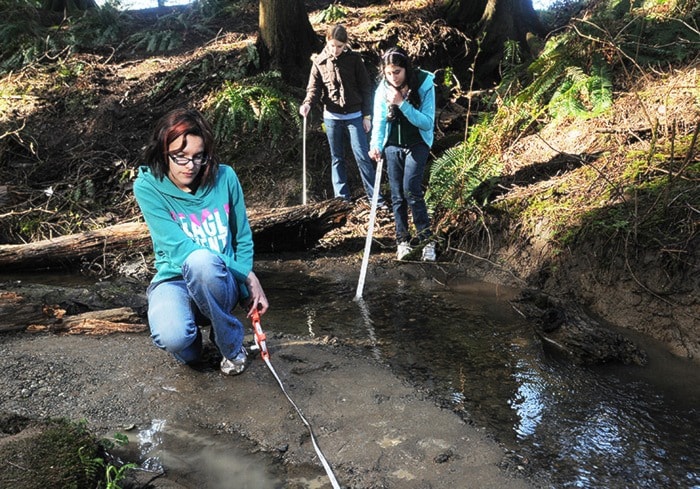A B.C. Ombudsperson’s report is ripping the province’s stream rules, just as Maple Ridge council starts discussion of switching to them.
The B.C. government brought in the Riparian Areas Regulation in 2005. It allows developers to hire qualified environmental professionals to determine how far roads and buildings can be built from streams.
Maple Ridge, however, chose to stick with the tougher Streamside Protection Regulations, developed by scientists and environmental groups, and usually require further setbacks and stream preservation areas.
The report says fewer than half of those qualified environmental professionals who determine the riparian setback areas have taken the government’s three-day training course.
It also says the government is not reviewing assessments of streams and has no system to check on the professionals.
The government hasn’t even changed its regulations following a 2011 court ruling that said cities can’t change the setbacks, ombudsperson Kim Carter says in her report.
Maple Ridge Coun. Cheryl Ashlie is wondering why council is even spending time on the issue, given its heavy workload.
Coun. Al Hogarth, a realtor, previously called for the review of Maple Ridge’s streamside protection regulations and filed a notice of motion two weeks ago, placing the topic on council’s April 22 agenda.
“I like where we are now right now,” Ashlie said. “I’m interested to see what they’re bringing and why.”
Coun. Michael Morden, running for mayor in November’s election, supports a review.
Ashlie said Maple Ridge’s streamside protection regulations, which create large natural corridors that protect streams, are almost a “lapel pin” that sets the district apart.
“I felt we’ve really got a great return on this.”
She also says she hasn’t heard complaints about Maple Ridge’s system, although developers do compare Maple Ridge to other cities that follow the looser riparian areas regulation.
Geoff Clayton, past-president of the Alouette River Management Society, pointed out that even 30-metre setbacks – the default distance for fish-bearing streams– under streamside protection regulations are a compromise.
Clayton said when the regulations were being developed, distances of 100 and 50 metres were discussed.
“My personal view was it was a reasonably fair outcome, but not based on solid scientific facts.”
He said the riparian areas regulations are not scientifically based.
“We know now and suspected all along that the Liberal push for RAR’s was a sop to developers and would not stand up to critical scientific review and now the proof is rolling in that 48 per cent are in non-compliance and that doesn’t speak to the 52 per cent left, that may well fail too, as time goes on.”
Maple Ridge environmental planner Rod Stott said earlier he hasn’t yet seen any scientific evidence proving that riparian areas regulation preserve fish or their habitat. He added that riparian areas regulation are better suited for areas where development is already present.
Leaving natural areas saves cities money because they control flooding and preserve water.
Greta Borick-Cunningham, also with ARMS, Maple Ridge’s steep ravines means that under riparian areas regulation, there would be little room to develop trails or improve slope stability.
While the streams might be protected, the riparian area that supports the stream wouldn’t be protected, she added.
Hogarth says moving to riparian area regulations would make Maple Ridge consistent with other cities. Pitt Meadows, Vancouver and Coquitlam also use RAR.
However, Langley, Surrey, Delta and North and West Vancouver use the tougher streamside protection regulations.
